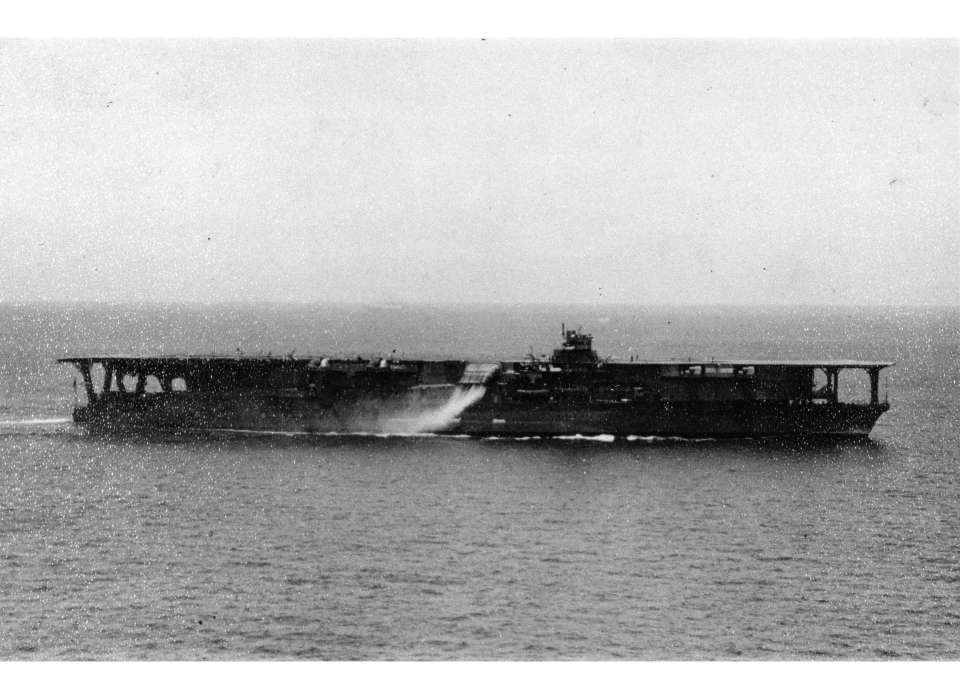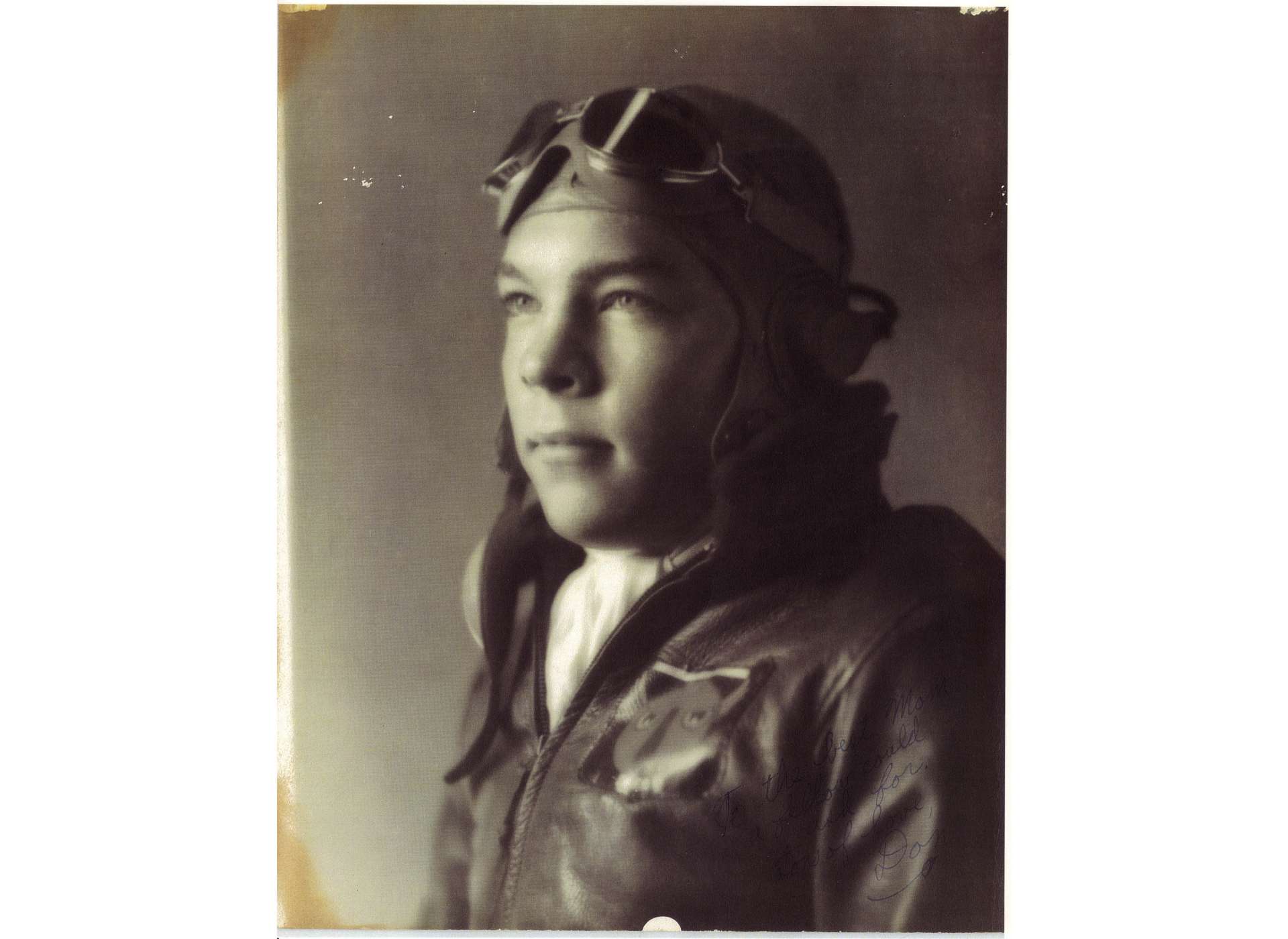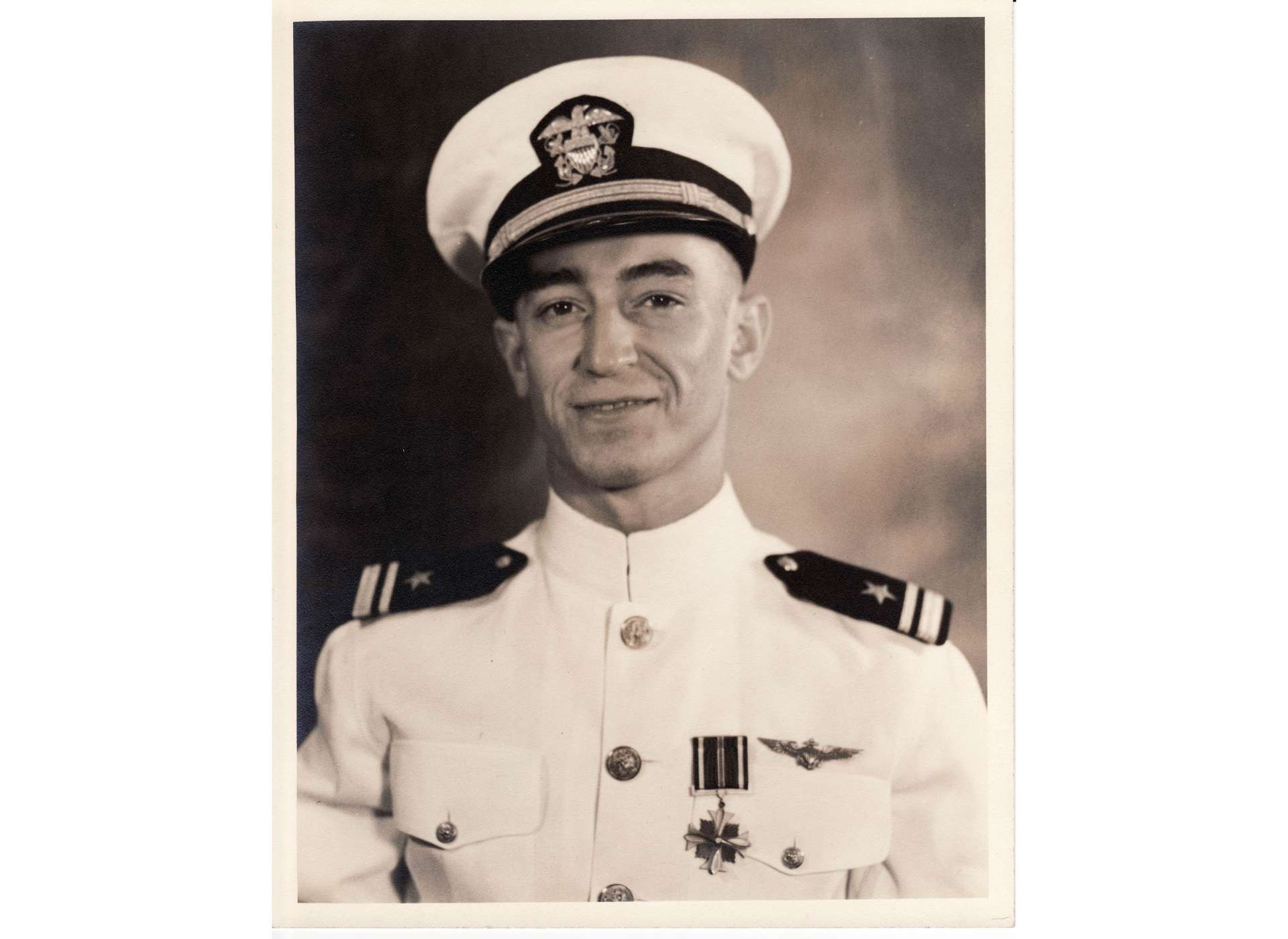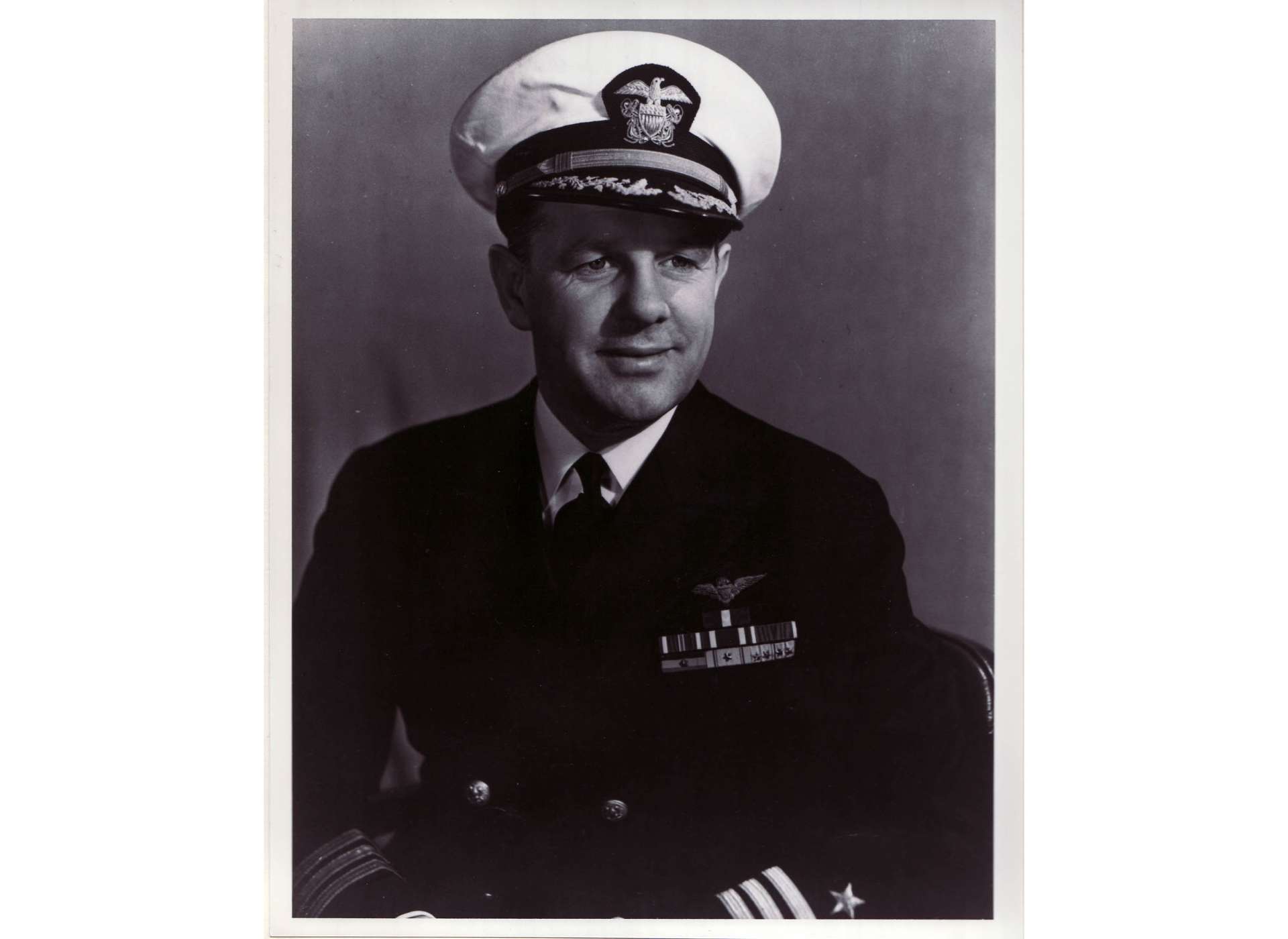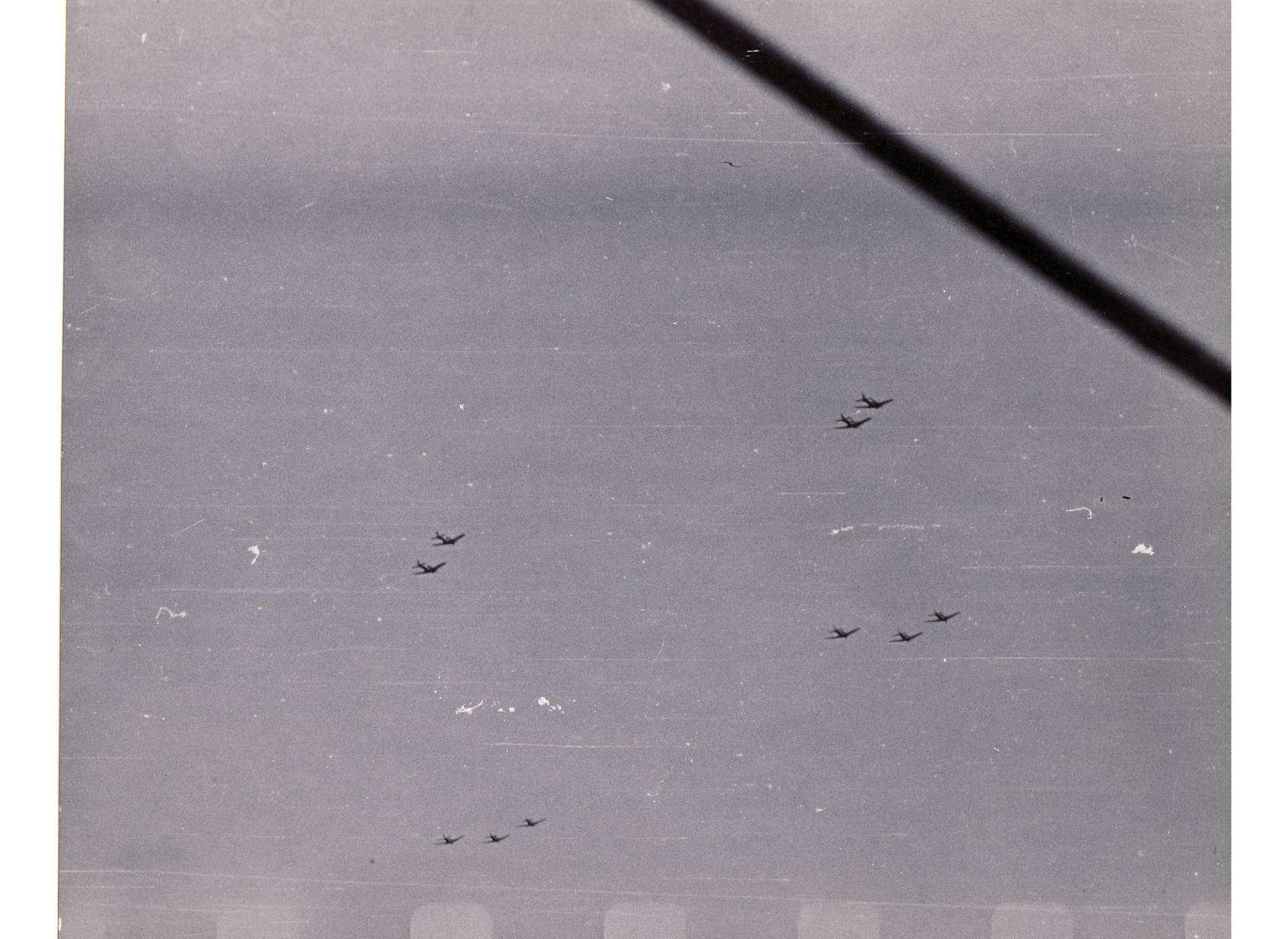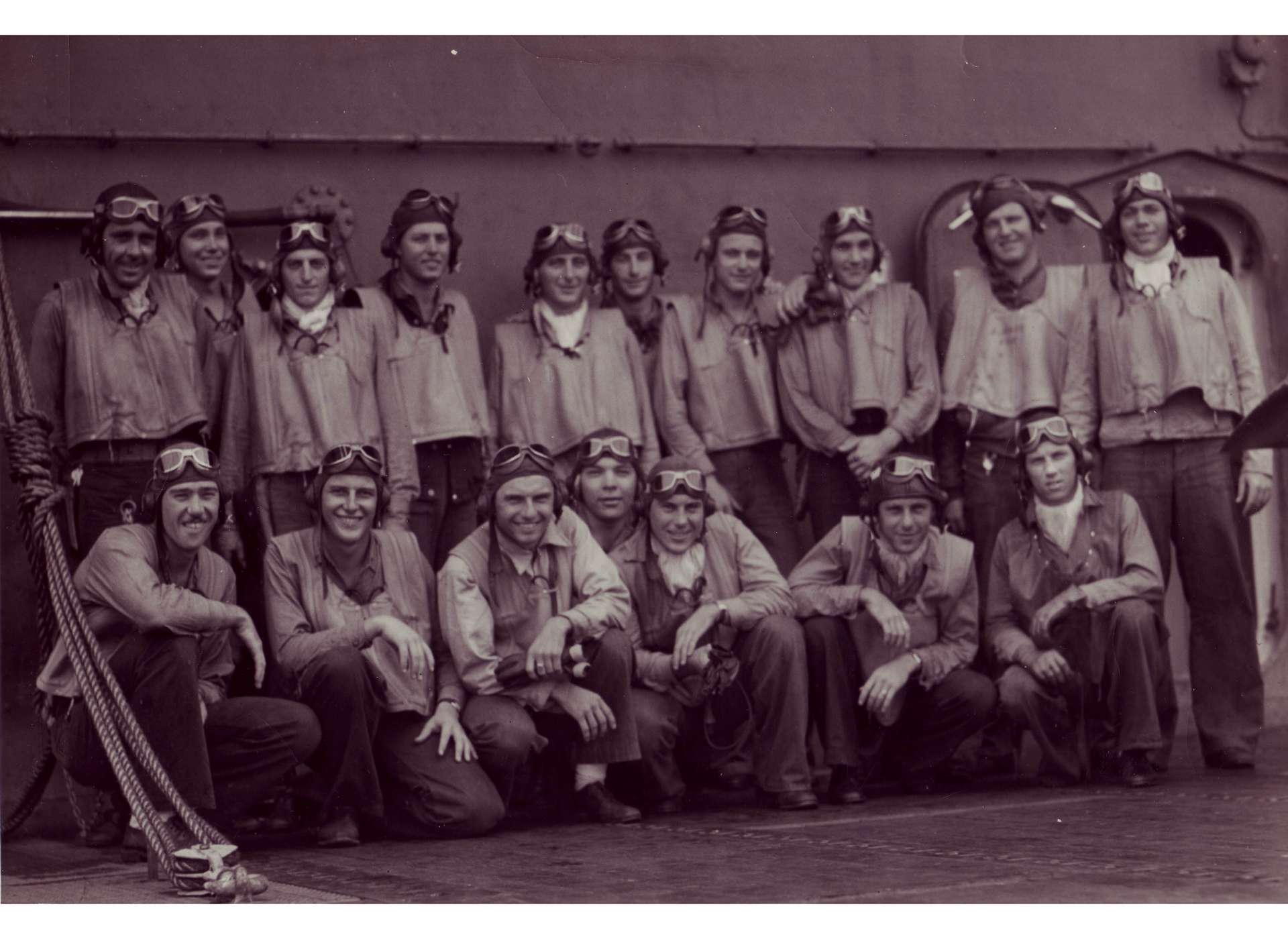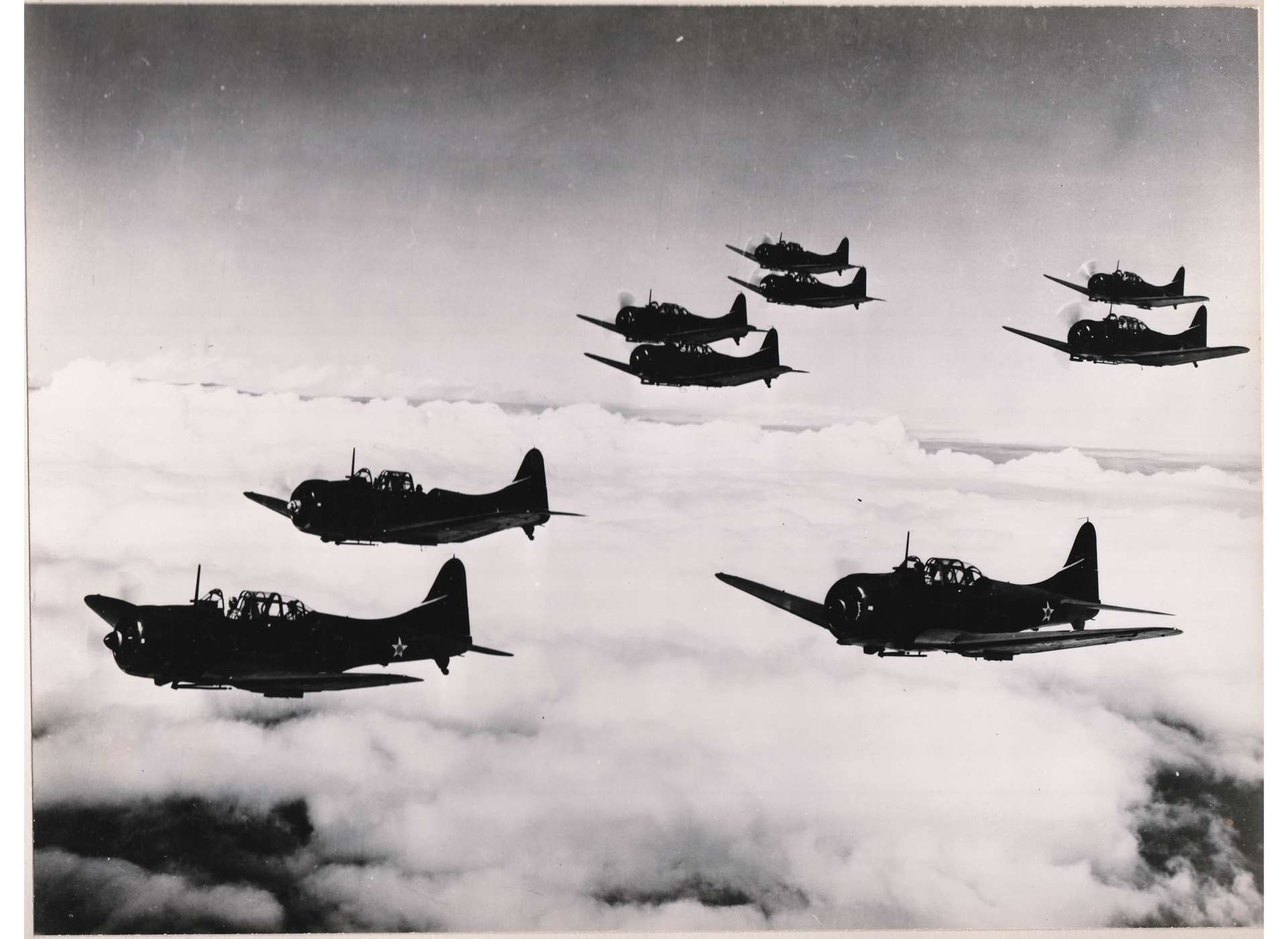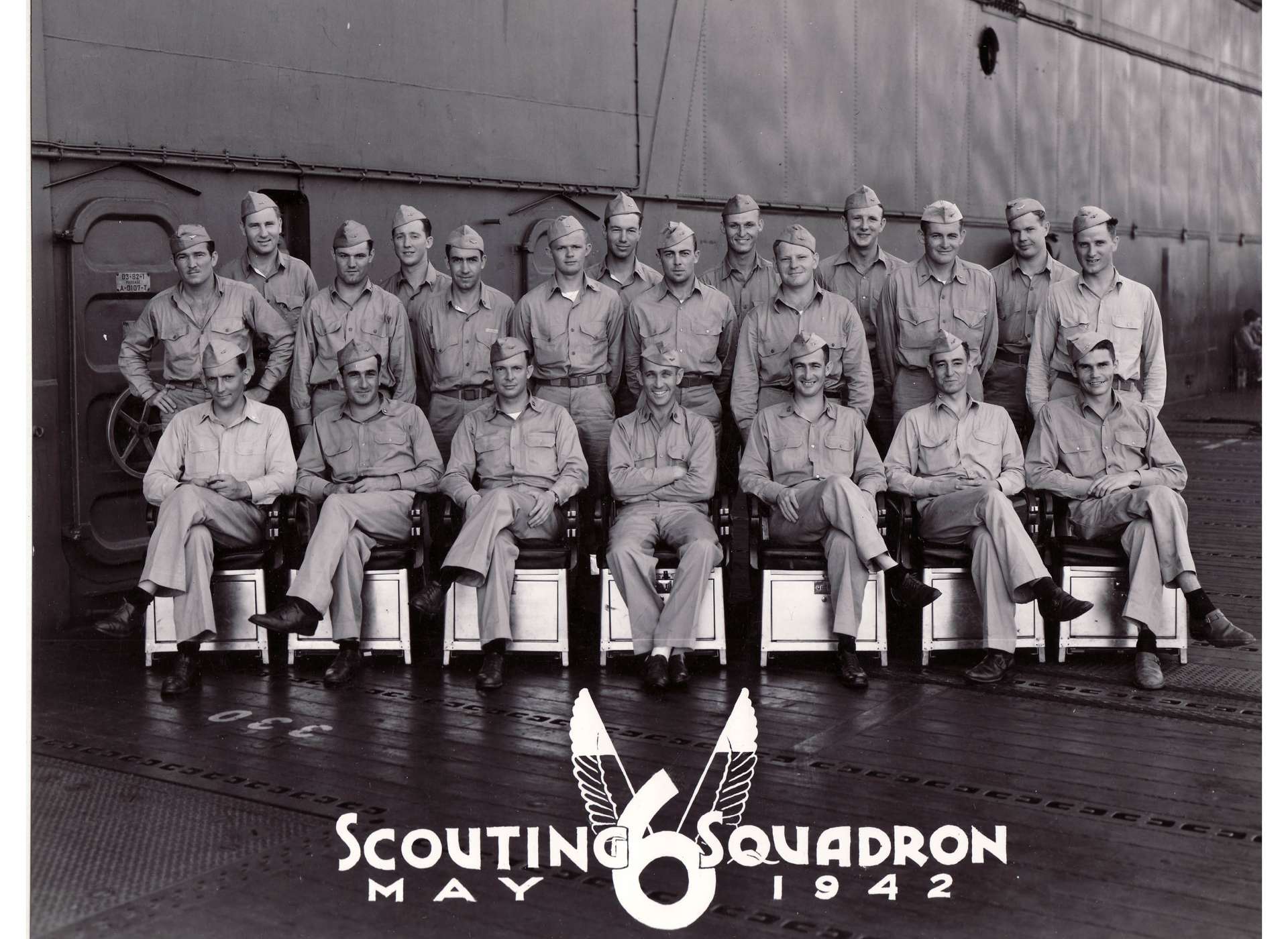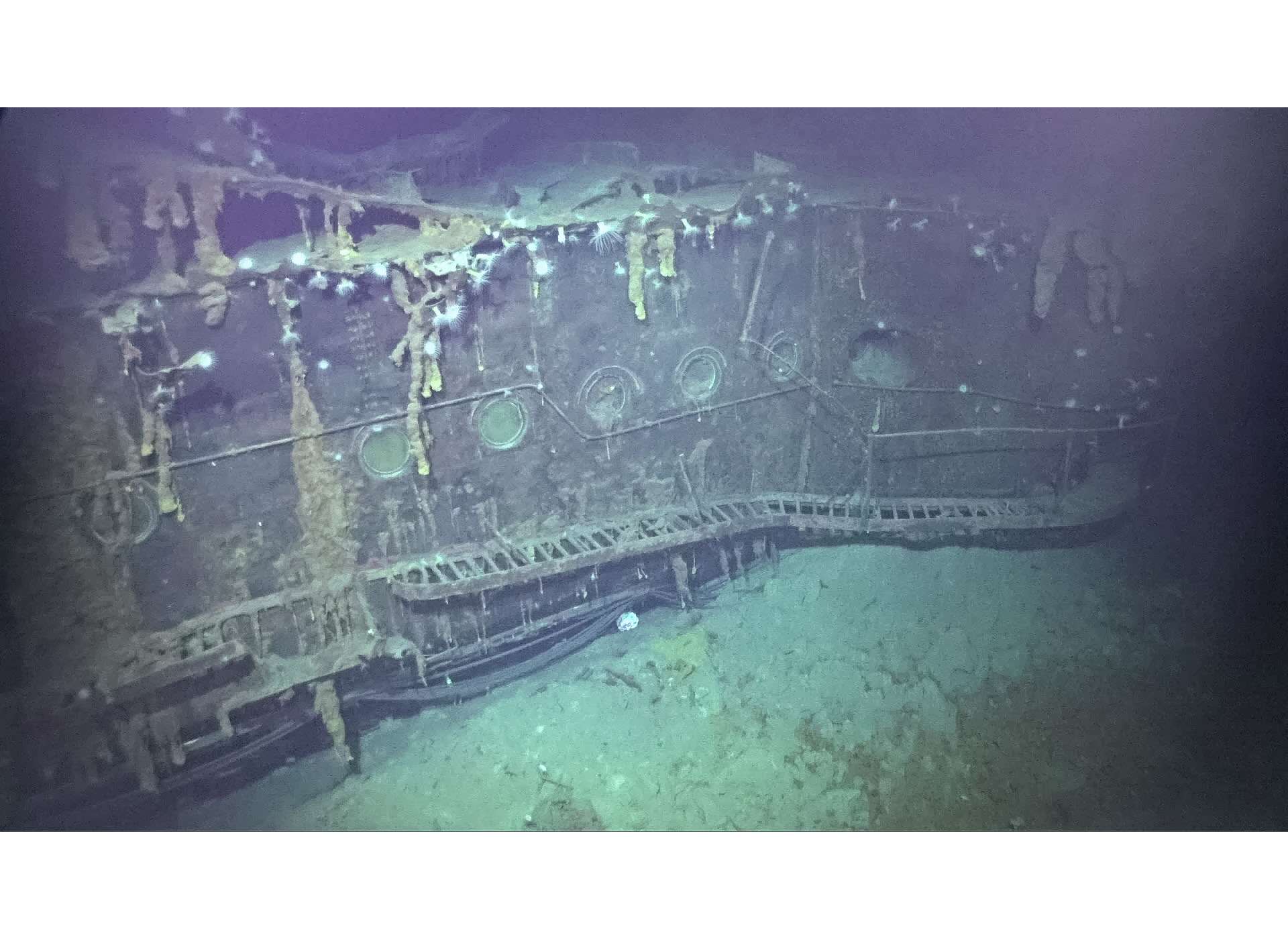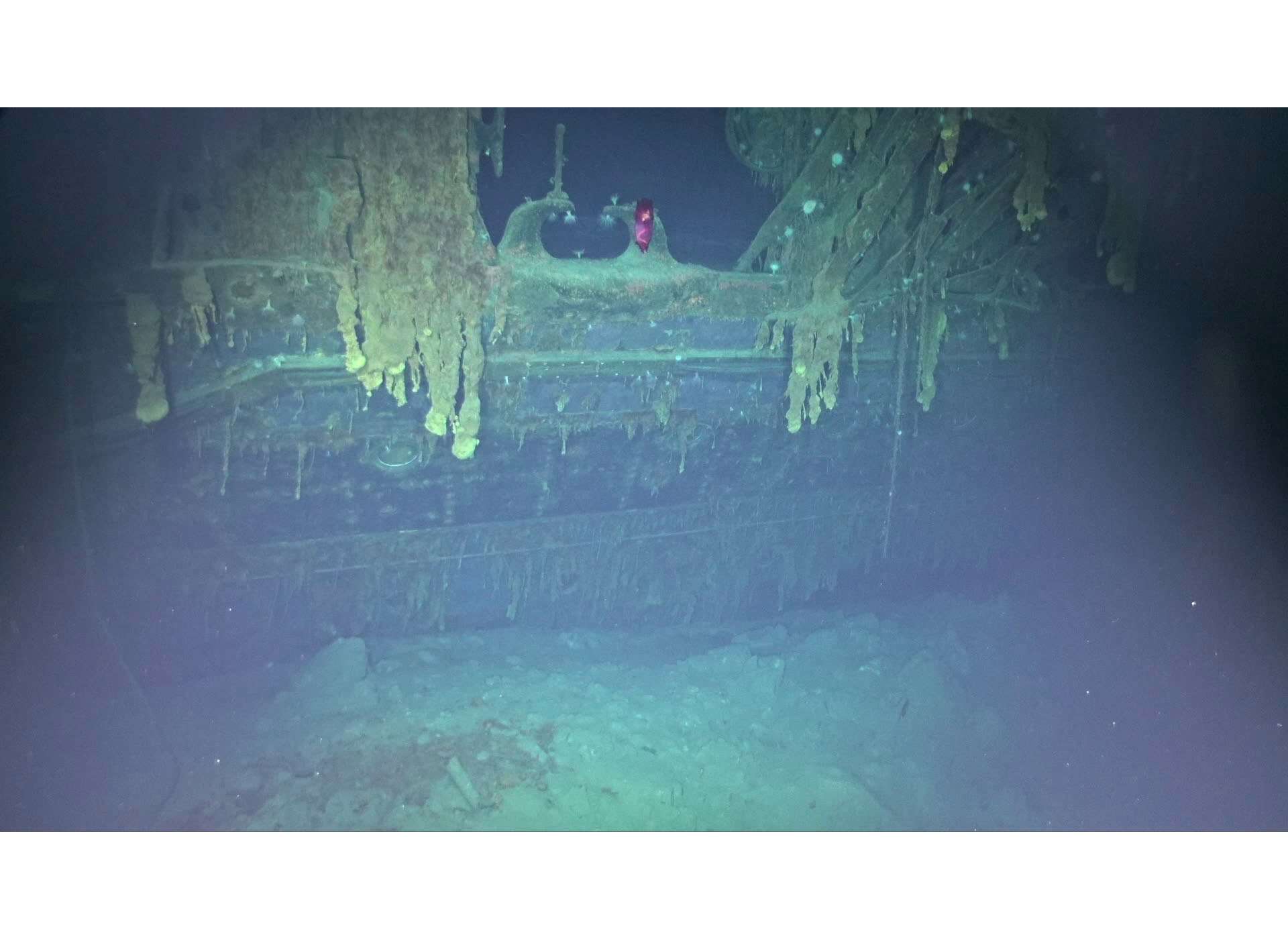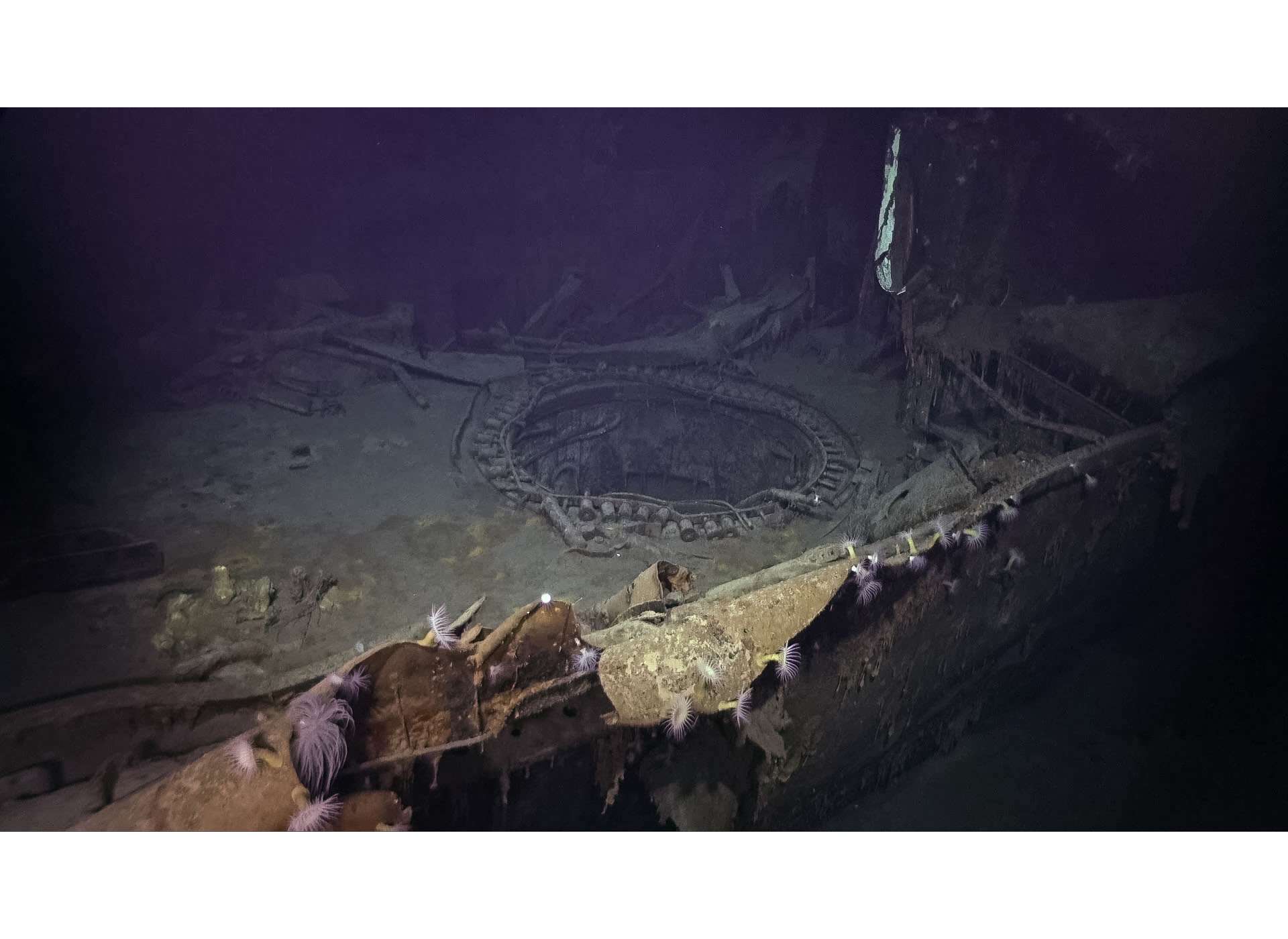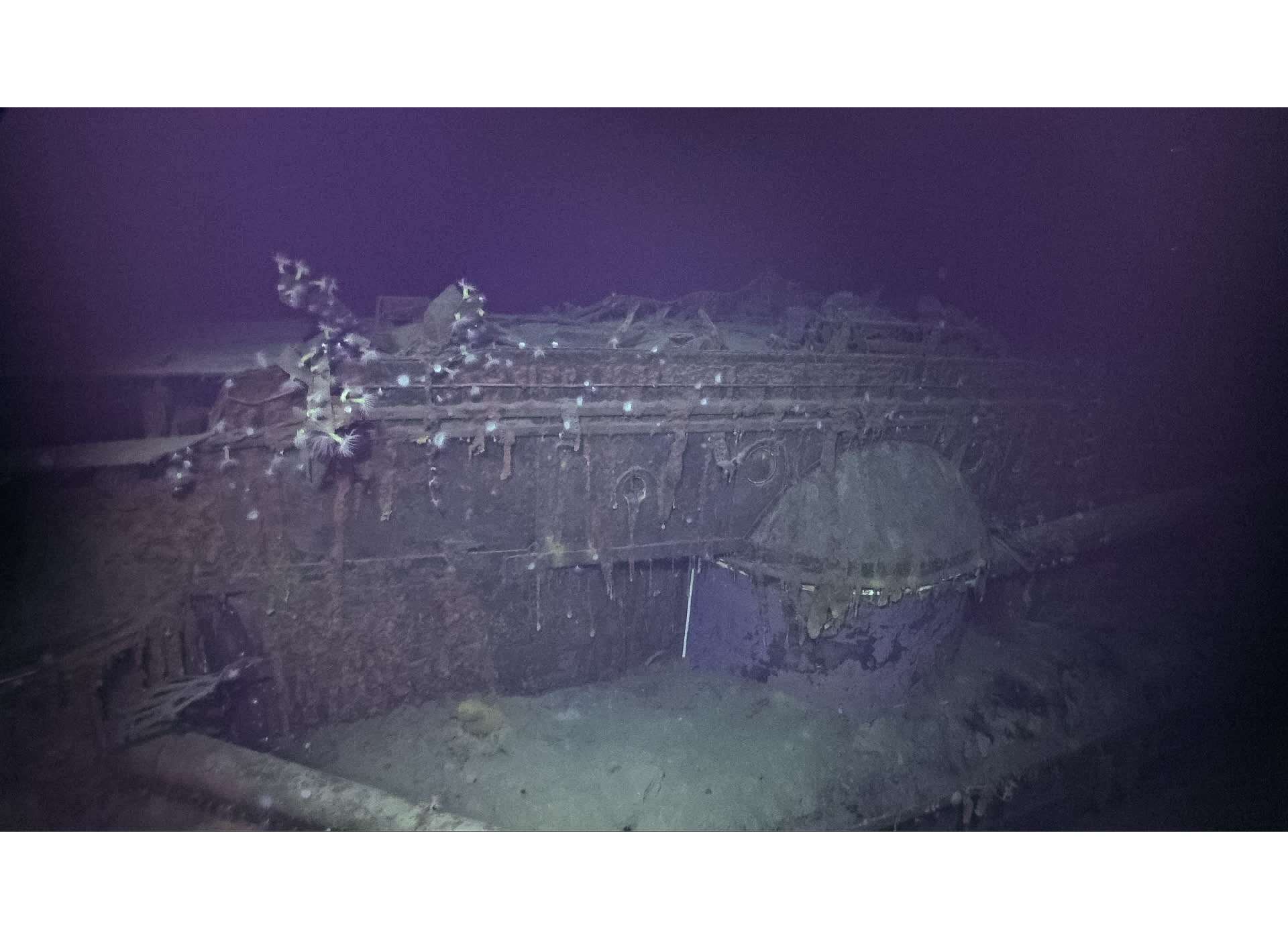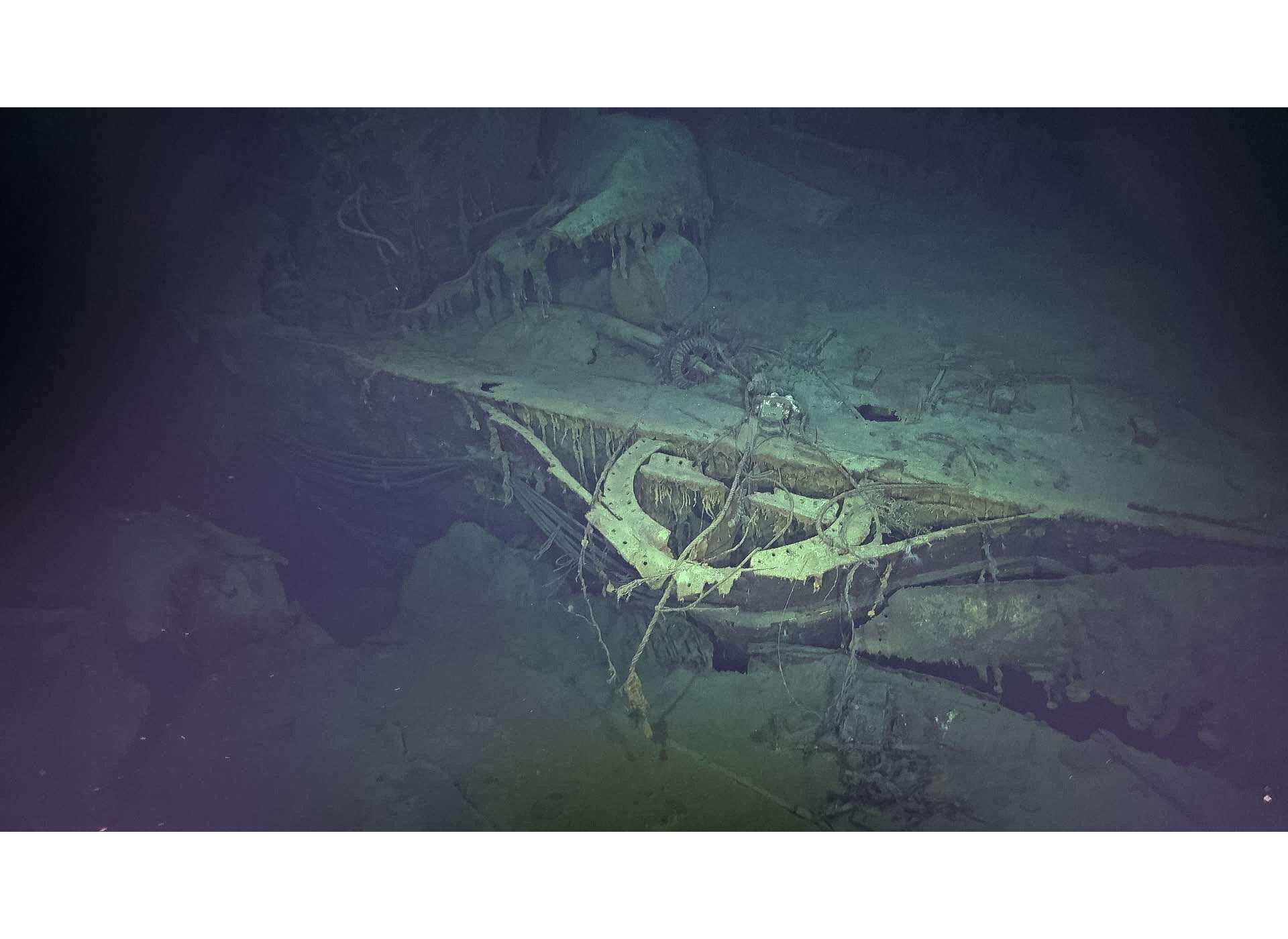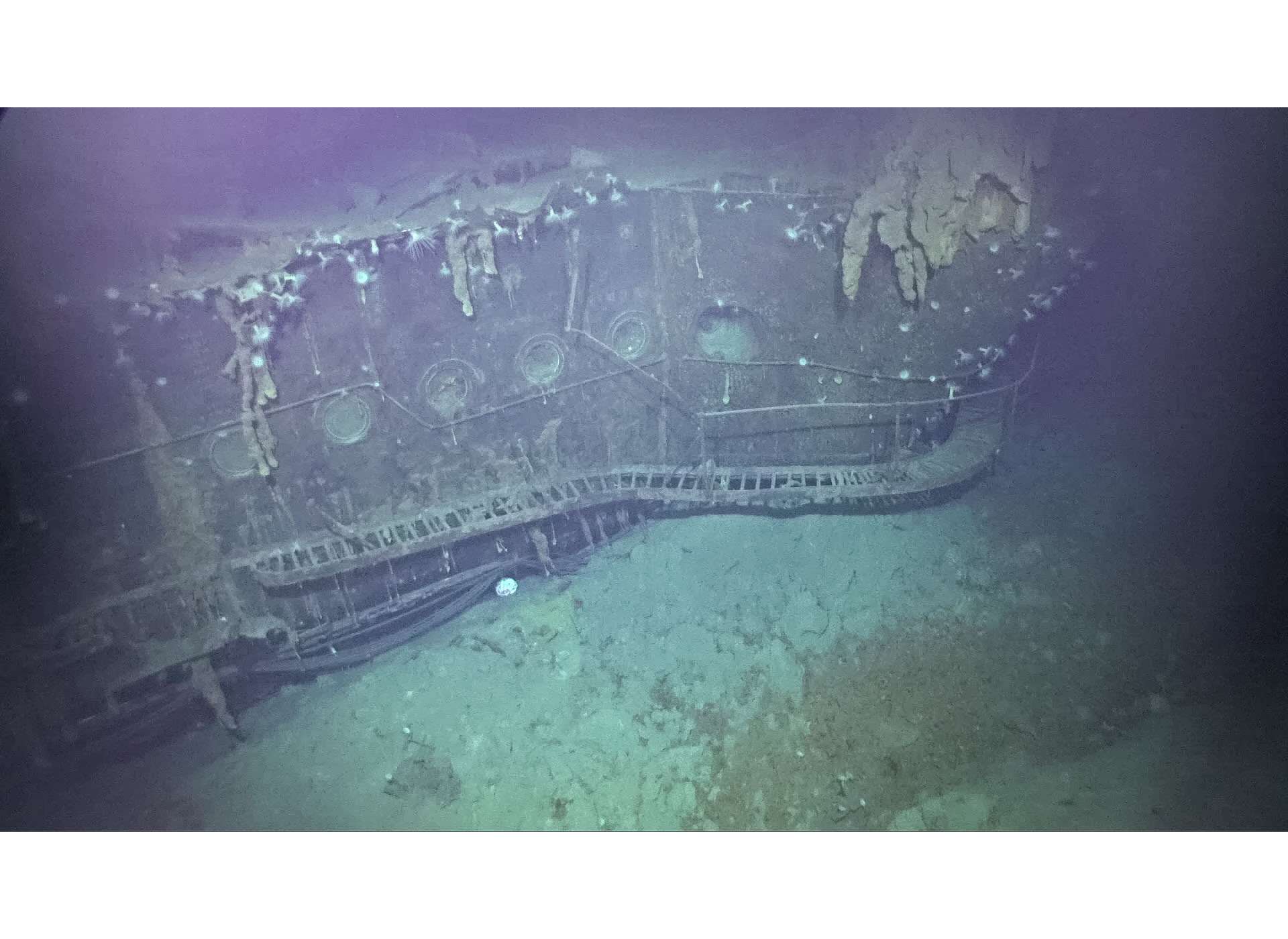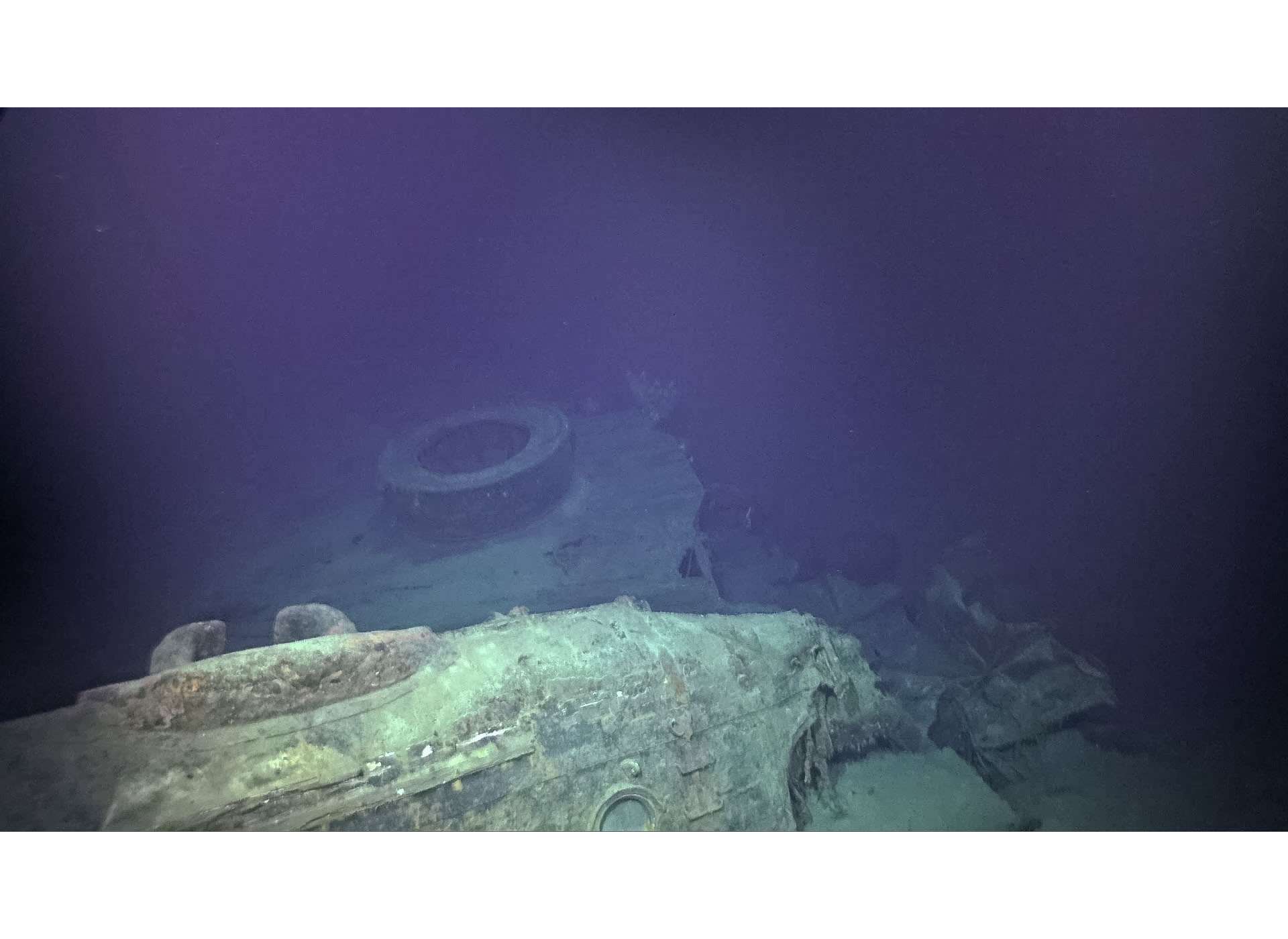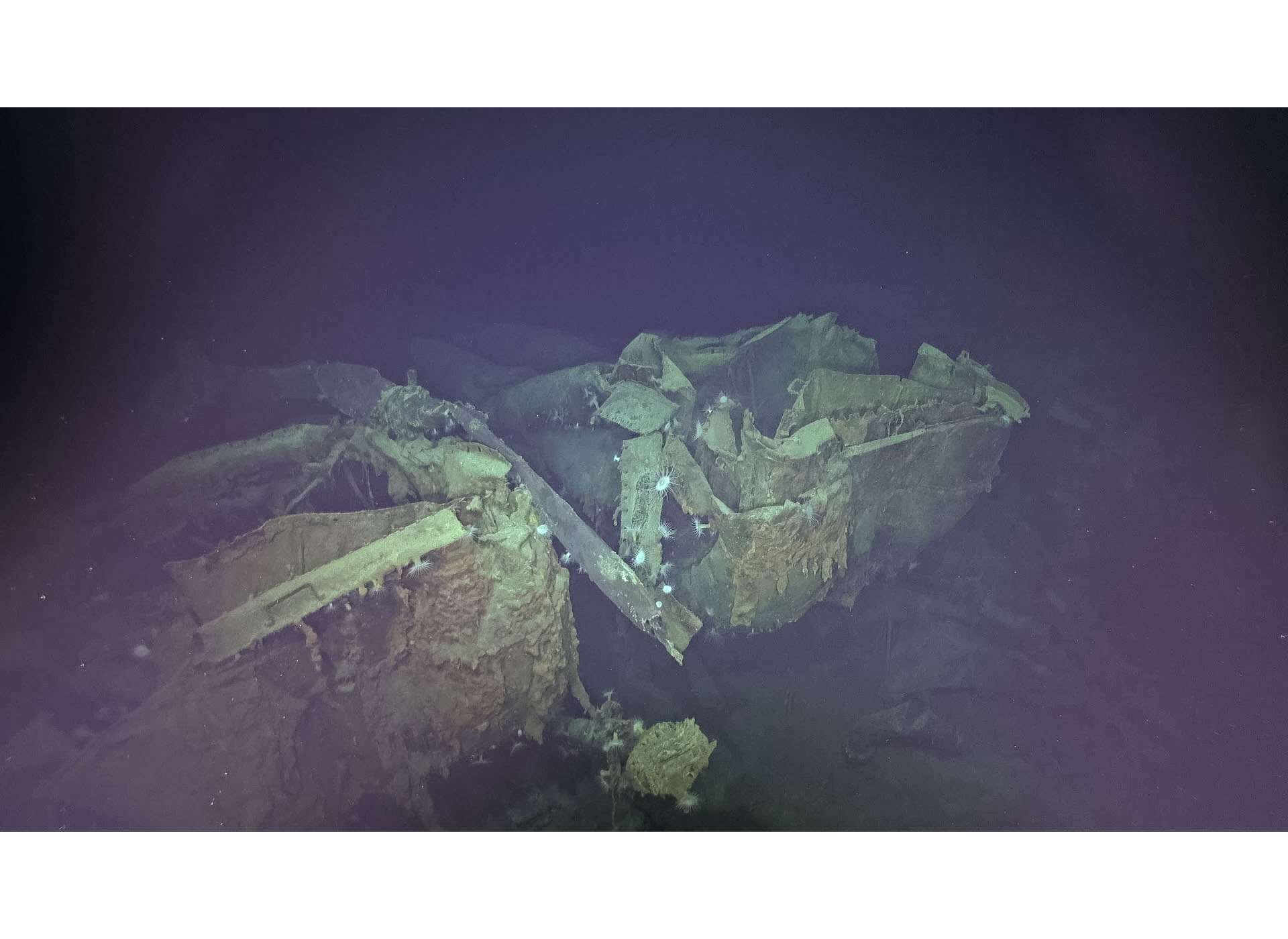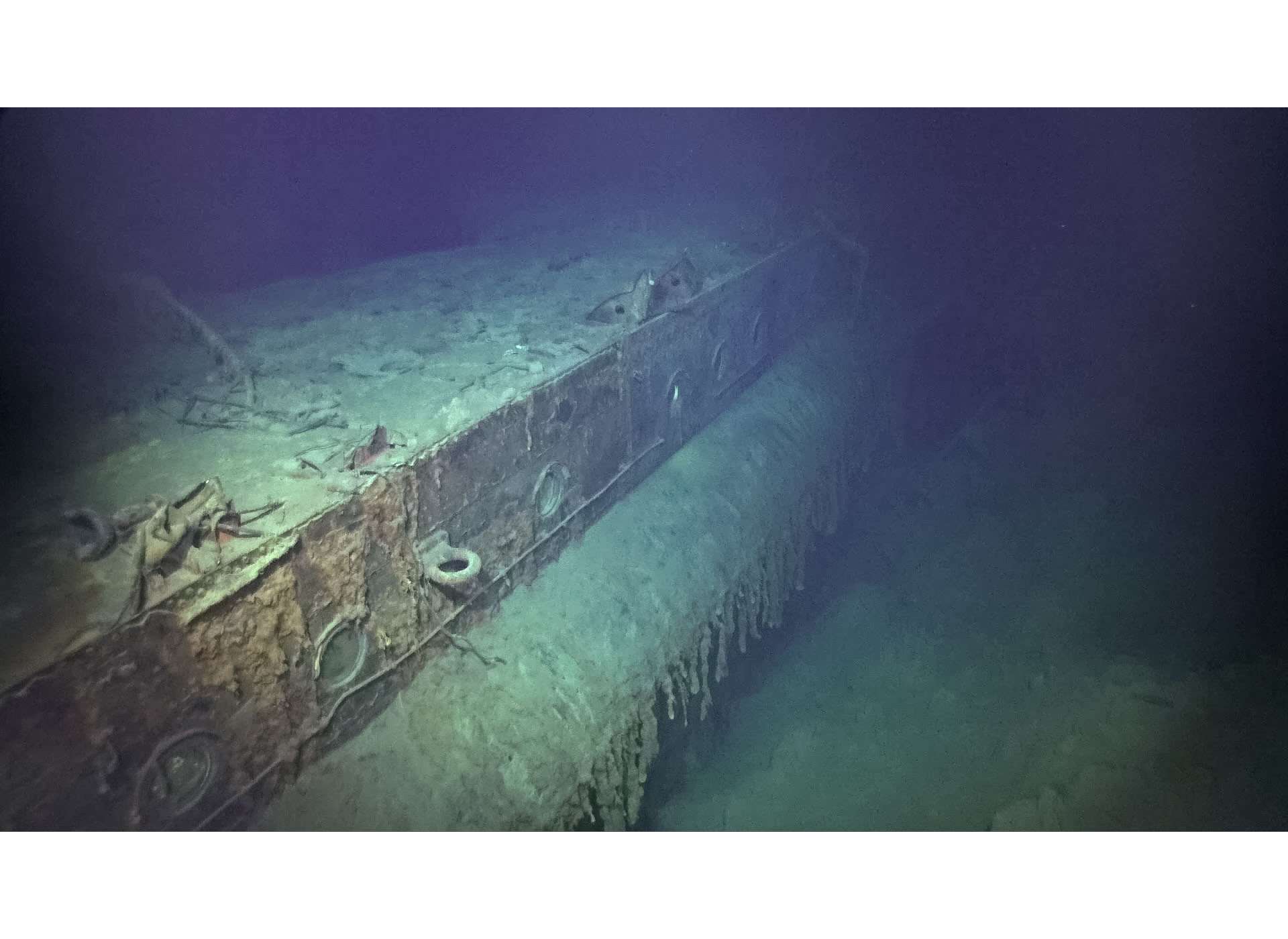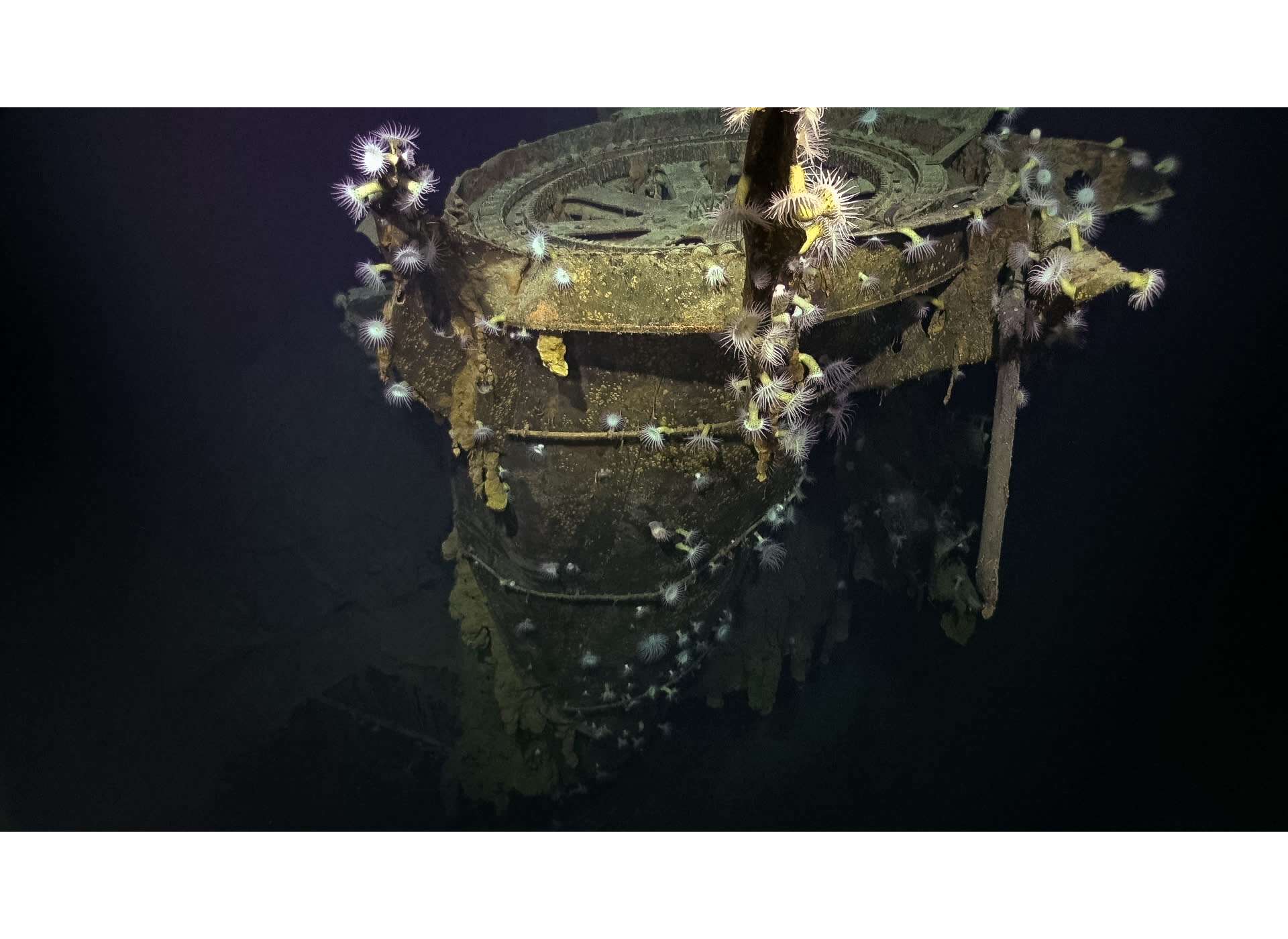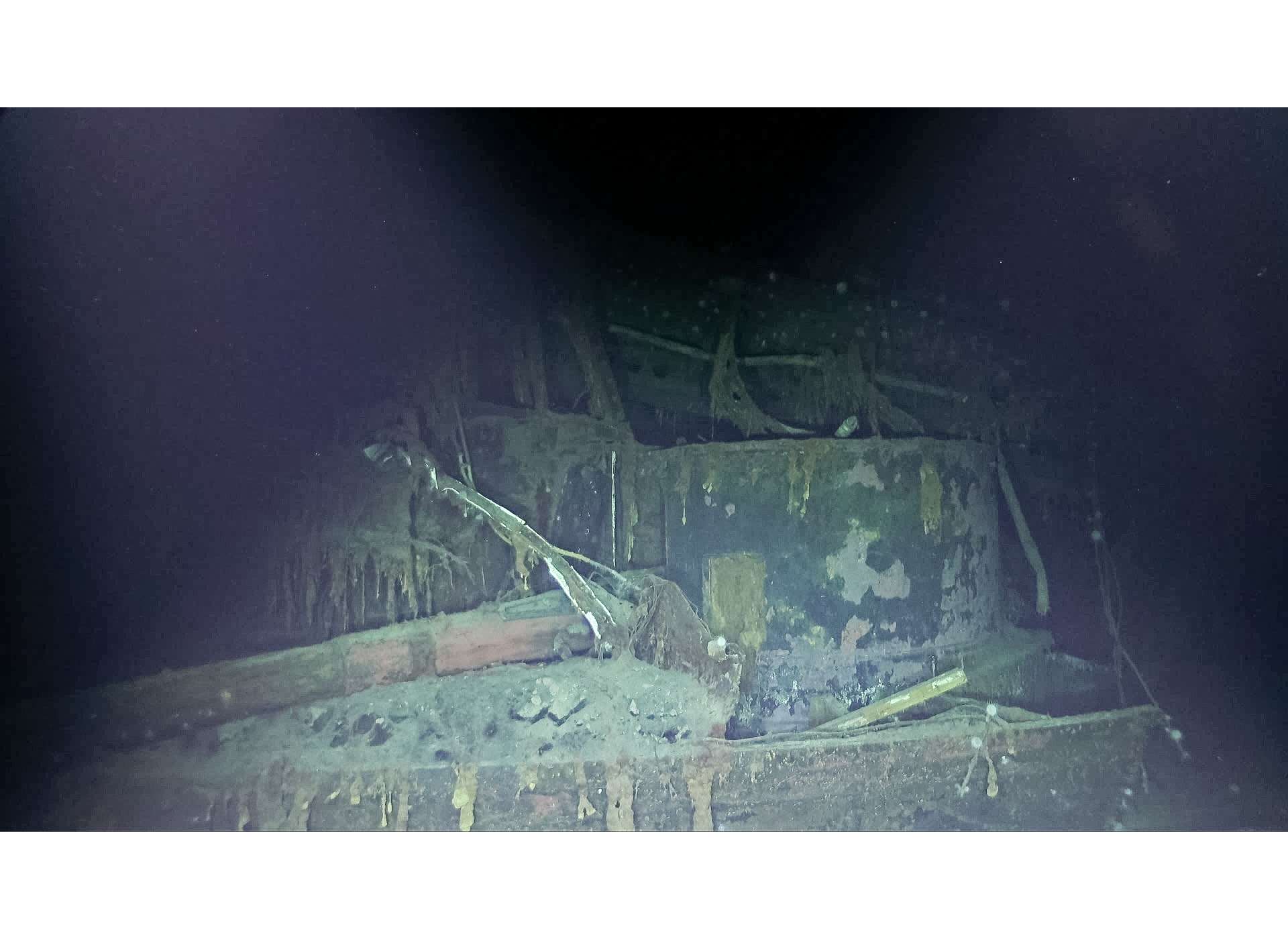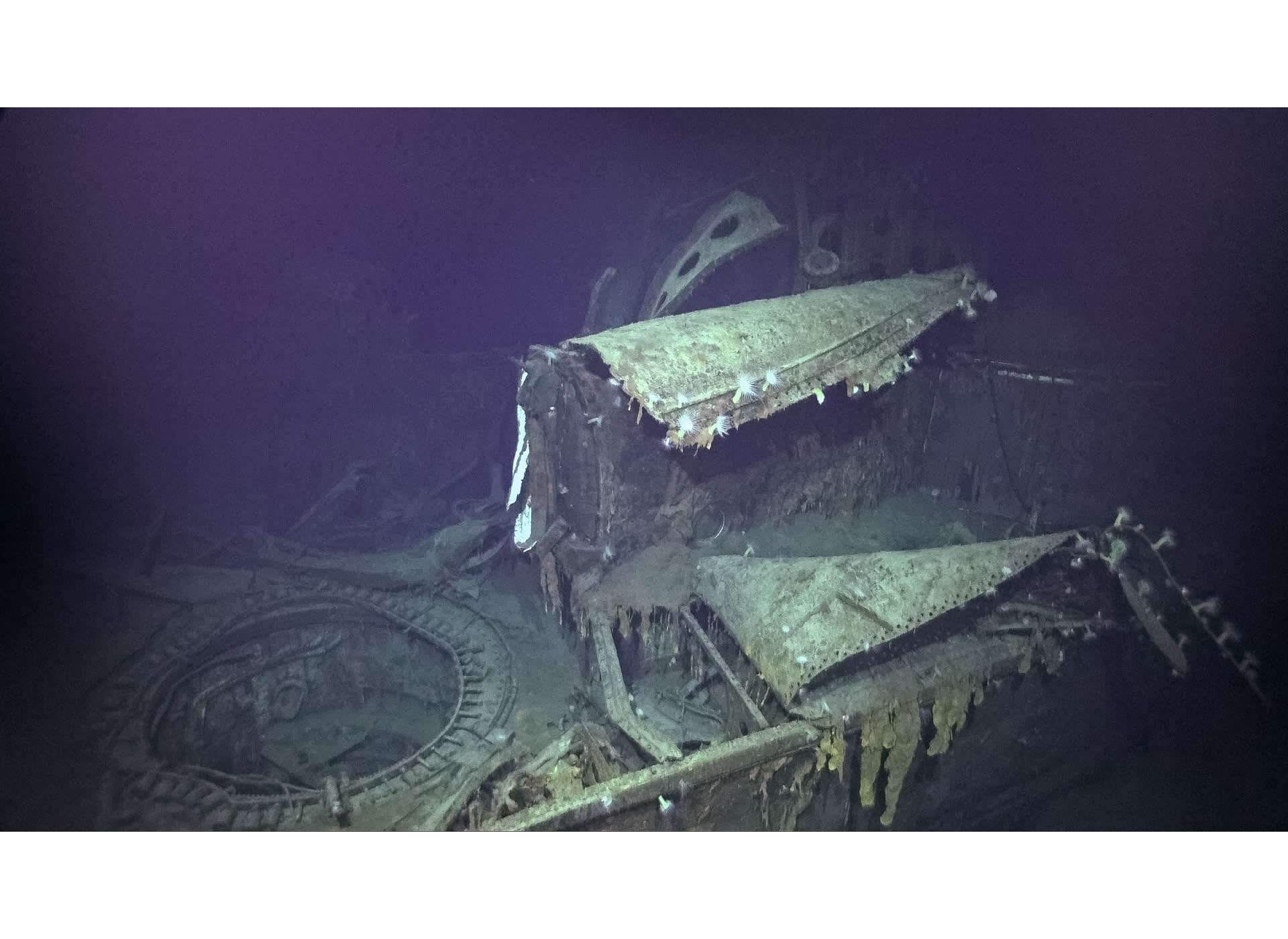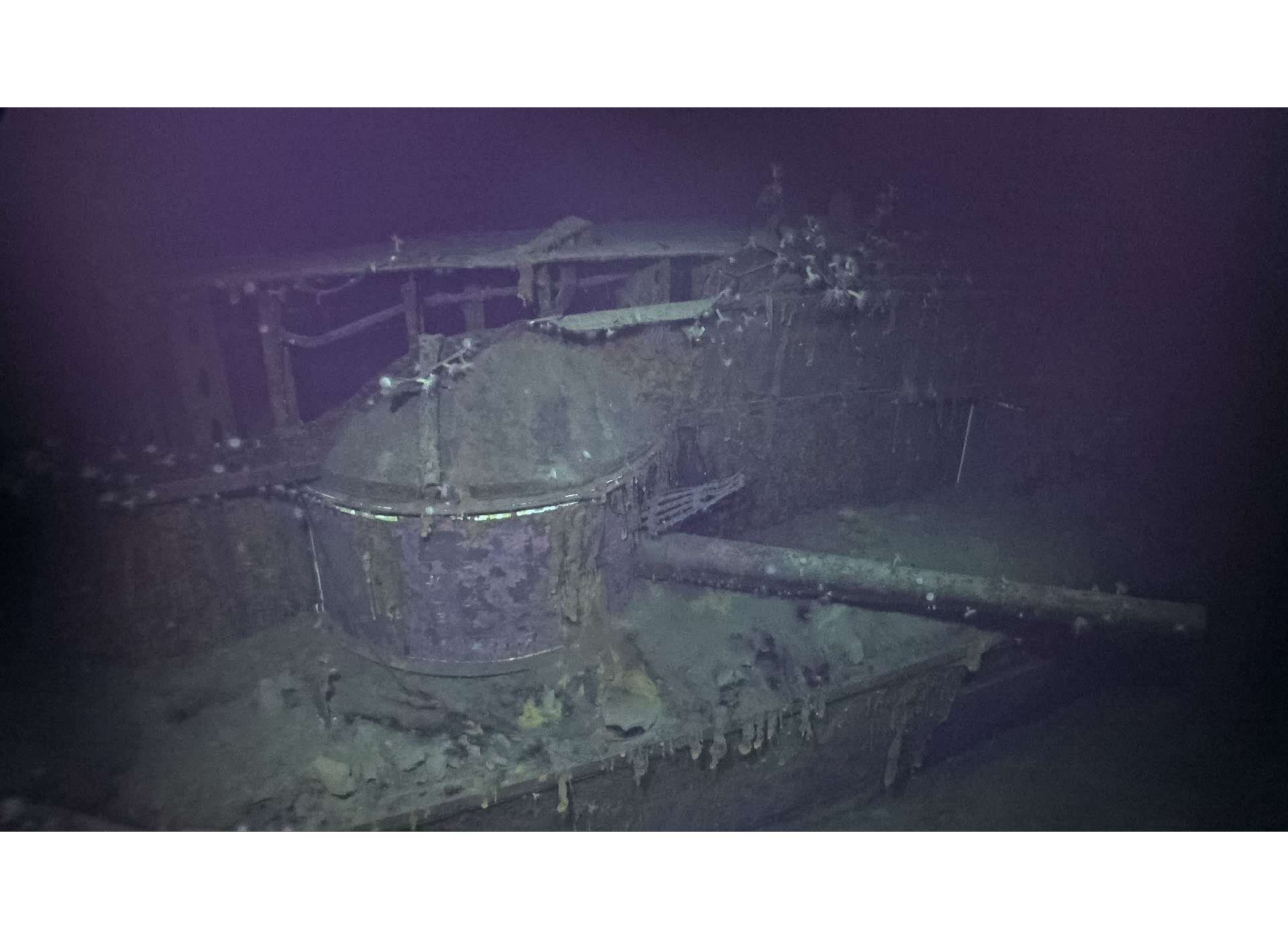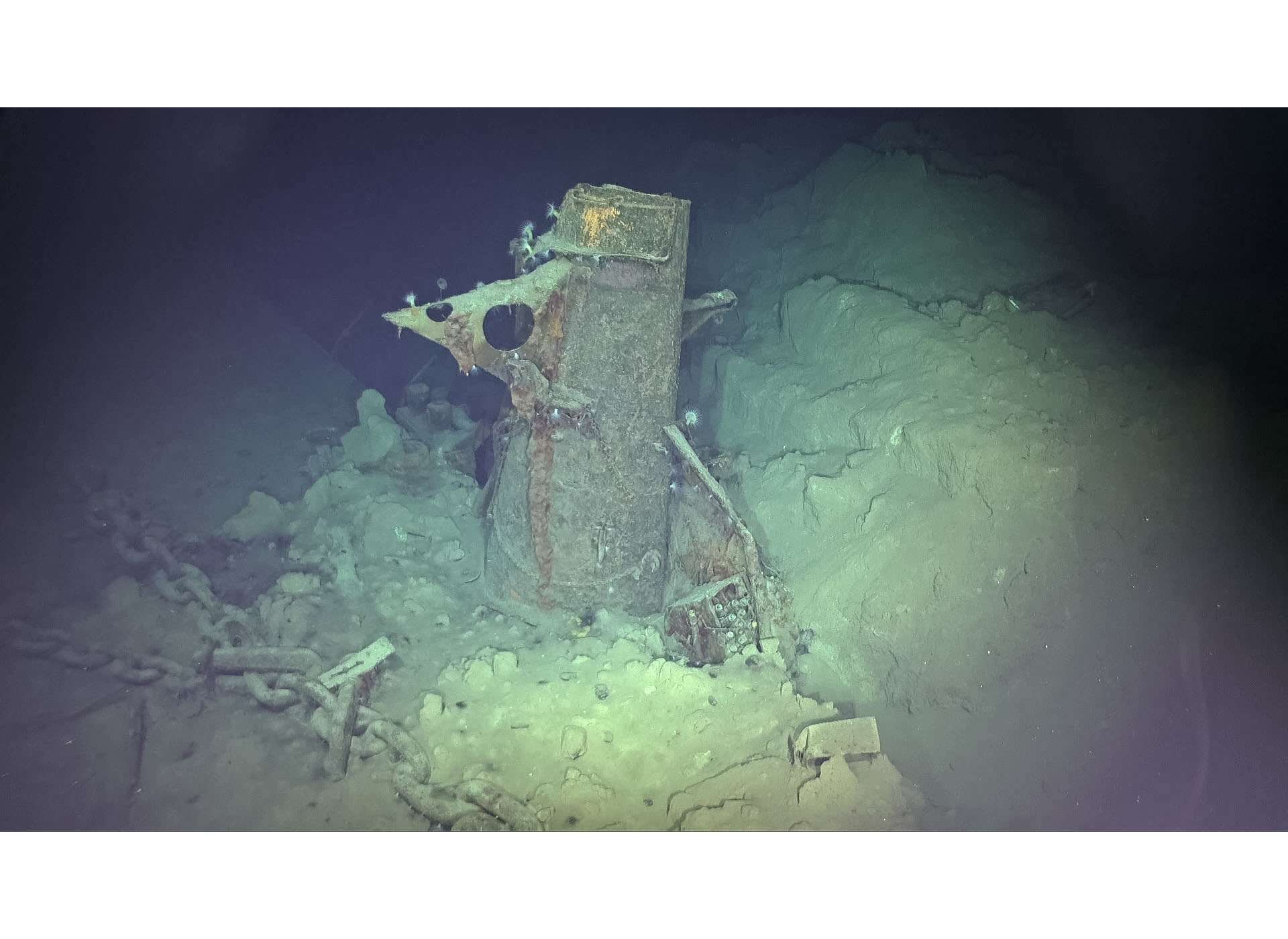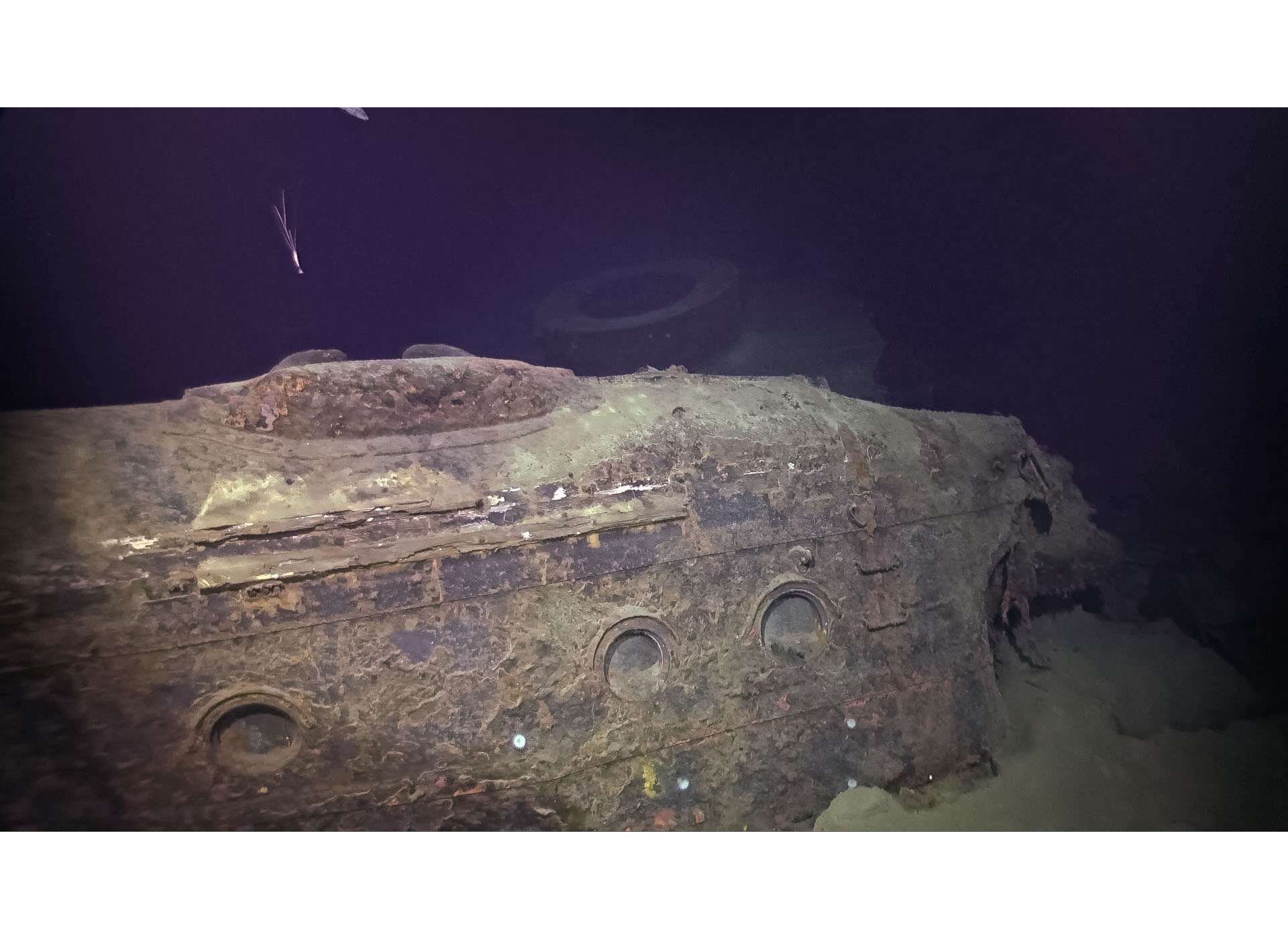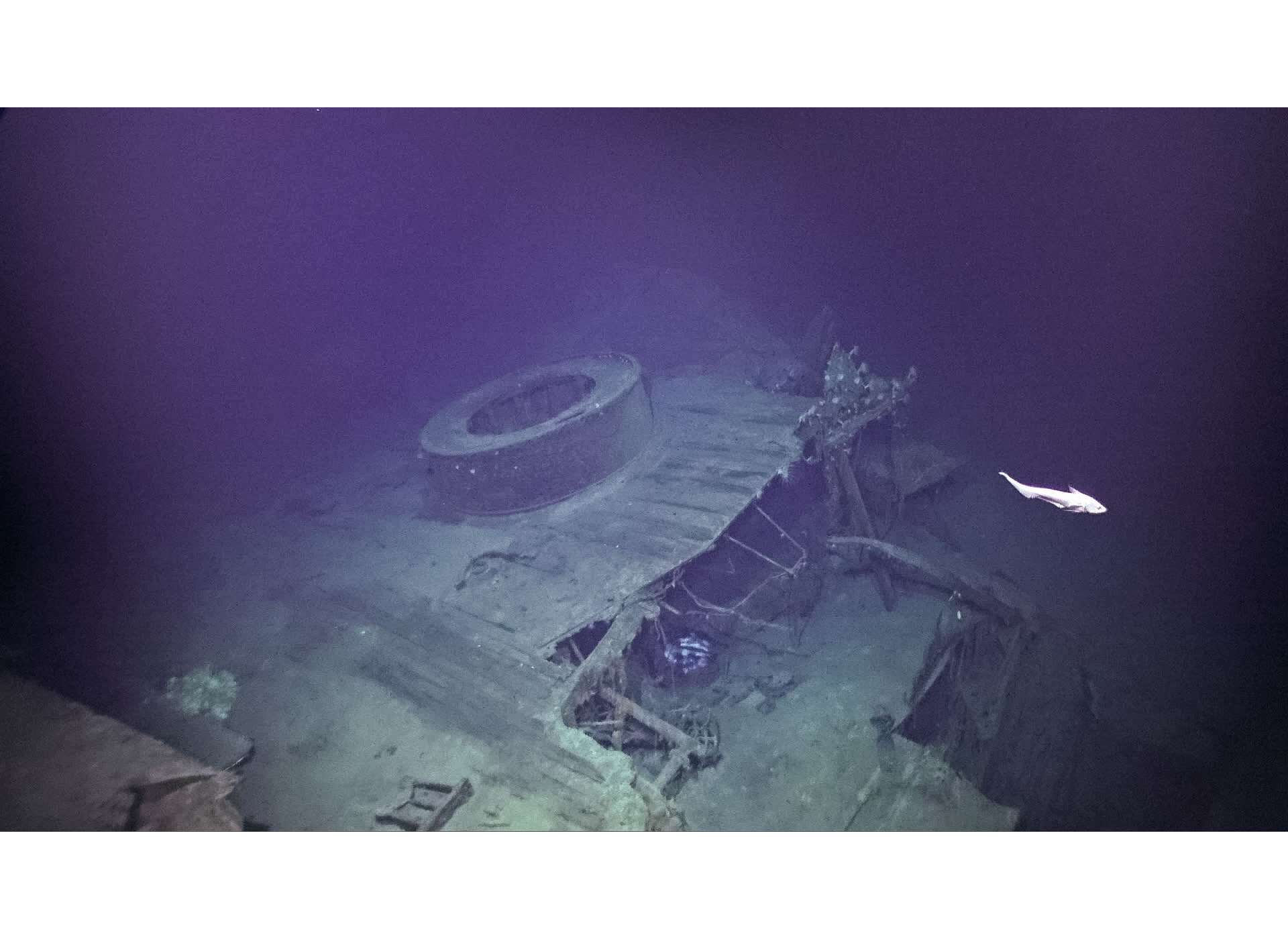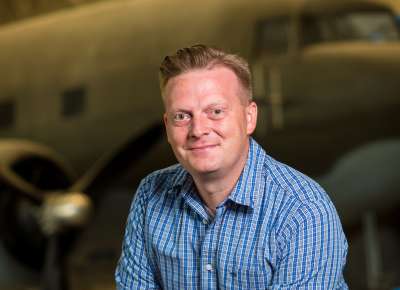Top image: Japanese aircraft carrier Kaga
As 18-year-old Californian Don Hoff clambered up the wing of his SBD Dauntless dive-bomber, he couldn’t help but notice his legs were shaking. He looked at his hands as they gripped the rear cockpit of the US Navy airplane—they were shaking too. He then noticed his heart, which was nearly pounding out of his chest. Yet, as the anxiety started to overtake him, he remembered why he was sitting in that rear seat aboard Sail 18 on the deck of the aircraft carrier Enterprise (CV-6) that bright sunny morning of June 4, 1942: His job was to help protect his airplane, and if he could, help avenge the attack on Pearl Harbor.
The night before, Hoff couldn’t sleep; he knew the next day would be a busy one. He wasn’t alone, as the other radioman/gunners in his squadron, Scouting Squadron 6 (VS-6), couldn’t sleep either. They had all been awakened at 3:00 a.m. that morning for chow and had been sitting in their ready room for what seemed like an eternity when finally, they heard the loudspeakers blare, “Pilots man your aircraft!” Hoff raced to the flight deck along with his buddies, the harsh sun blinding him momentarily when he got to the flight deck. That’s when he noticed his legs shaking, then his hands, and finally his pounding heart. Hoff had never been in combat before as this would be his baptism of fire, and he knew it would be his ultimate test.
Further up the flight deck, the pilot of Sail 7 from Coffeyville, Kansas, swung into the cockpit of his mount with ease and confidence. Jack “Dusty” Kleiss had seen combat already, several times actually, having participated in the early hit-and-run raids in February and March. Supremely confident in his ability as a dive-bomber pilot, Kleiss knew that if he found the Japanese carriers of Kido Butai, he would hit them, no doubt. However he and the other SBDs of Enterprise Air Group had to find them first.
The aircraft of VS-6 formed up above the “Big E” and orbited their carrier for over 20 minutes when the ship flashed a message to Enterprise Air Group commander, C. Wade McClusky, that said, “Proceed on mission assigned.” With that order, Kleiss and Hoff, flying on Kleiss’s wing, throttled away from their floating home, bound for destiny.
-

Don Hoff in 1942
-

Dusty Kleiss early 1942
-

Commander Wade McClusky in 1943
Despite the heat of the Pacific, Hoff was freezing in the rear seat of his SBD. The air at 20,000 feet was significantly colder than at sea level, and although calm thanks in part to the oxygen he was breathing, his legs were shaking again from the cold. Beating his hands on the fuselage of the Dauntless helped keep them warm, but annoyed his pilot James Dexter, so he stopped the drum beat and looked at the ocean below, scanning the sea for the wakes of enemy ships. They had been flying for hours, already passing the supposed point of interception and had seen absolutely nothing of the Japanese fleet.
In the lead aircraft of the 32-plane formation, Commander McClusky agonized over what to do. He had reached the point of interception and found nothing. He knew that his formation carried the power to kill the Japanese carriers—if only they could find them. Plus, he knew that many of his aircraft were running low on fuel. He had to make a decision and make it now: Should he turn around and head home now and get his men back safely, or proceed further and hope to find his quarry? McClusky knew the enemy fleet had to be out there and they had to be close. The fate of the battle, and at that point in time, the war, lay on his shoulders. With his mind made up, he chose to continue the search.
Kleiss was beginning to get a bit dismayed at his squadron’s prospects of finding the enemy until he saw McClusky waggle his wings ahead in the formation. He looked as McClusky frantically pointed down at the sea. Some 20,000 feet below Enterprise’s SBDs was a lone Japanese destroyer, steaming at flank speed, her bow pointing like an arrow to the horizon ahead. Hoff saw the destroyer too, although he admittedly didn’t attach the significance to the lone ship that McClusky did. McClusky assumed that the destroyer, later identified as the Arashi, had to be making flank speed to catch up with the Japanese carrier strike force. Ten minutes after seeing Arashi, McClusky’s fateful decision paid off. Just ahead on the horizon McClusky could see the wakes of many Japanese ships. He broke radio silence and sent a short terse message back to Enterprise, “This is McClusky, have spotted the enemy.” Pandemonium broke out on the “Big E’s” bridge as Admiral Raymond Spruance, knowing now that McClusky and his 32 SBDs had located the Japanese fleet, that they would have a chance to gain the upper hand.
Kleiss saw the enemy fleet, and more importantly, he saw the bright yellow flight decks of four Japanese aircraft carriers. His target below was lining up perfectly as VS-6 filed into an echelon formation in preparation for the dive. The enemy ship was heading into the wind and he was heading straight towards it, a perfect set up for a dive-bombing attack. Two planes back, Hoff couldn’t see the Japanese carriers, as he was riding backwards, watching and waiting for Japanese Zero fighters—the combat air patrol—to attack his formation as they made their way towards the enemy. But to Hoff’s amazement, no Zeroes attacked them. It seemed as though the Japanese had no idea that Enterprise’s SBDs were even there. In fact, the Japanese were completely unaware. What combat air patrol was airborne were low on the water, having just decimated the attacks of Enterprise and Hornet (CV-8) torpedo planes. The Zeroes were looking for TBD Devastators at a couple hundred feet over the water, not SBDs 20,000 feet above them.
Flipping switches and changing fuel mixtures with the flick of a wrist like a well-oiled machine, Kleiss was ready to go. Ahead of him in a flash, he saw McClusky and his two wingmen peel off and dive on the enemy carrier below. Seconds later, Kleiss rolled his SBD over and followed his squadron commander down as they hurtled downwards at an 80-degree angle towards the massive Japanese aircraft carrier Kaga. Kleiss watched as McClusky and his wingmen missed the Japanese aircraft carrier, their bombs exploding harmlessly in the sea next to the huge ship. Fourth in the dive on Kaga was Kleiss’s squadron commander, Earl Gallaher. Kleiss watched as Gallaher’s bomb left his aircraft and flew, like a missile, directly at the ship, penetrating the flight deck near the third elevator and exploding in the ship’s berthing section, setting mattresses and material ablaze. It was a damaging hit to be sure, but not a decisive shot—those would come shortly.
-

VS-6 airborne morning of June 4, 1942, forming up above Enterprise, bound for the Japanese fleet.
-

VS-6 gunners aboard Enterprise in 1942. Don Hoff kneeling fourth from left.
-

VS-6 in flight 1942
-

VS-6 pilots in 1942. Dusty Kleiss sitting second from right.
As Kleiss sped down towards Kaga at over 250 miles per hour, he tried to keep the big ship in his telescopic sight, his aiming point being the enormous red circle on Kaga’s bow. At around 1,000 feet above the ship he released his bomb. The 500-pounder streaked towards the ship, smashing through the flight deck just a few feet from where Kleiss aimed, penetrating into the hangar deck where it exploded amidst the fully fueled Zero fighters, causing devastating damage. The concussion from Kleiss’s bomb blew out the windows on Kaga’s bridge and temporarily blinded its captain, forcing him to switch steering the ship to the emergency steering below decks in the engine room.
Two airplanes behind Kleiss was Hoff and his pilot Dexter. In his excitement, Dexter rolled his SBD too steeply and wound up on his back diving inverted towards Kaga. Riding backwards, Hoff realized this quickly as the negative g-forces threw him in his seat and pulled the two 1,000 round belts of ammunition from his twin .30 caliber machine guns out of their cans like two cobras rising in a basket. With one hand grabbing his microphone yelling the altitude to his pilot, and the other smacking the ammunition back in their cans, Hoff was a busy young man as he sped towards the carrier. Dexter released his bomb and pulled out hard just above the wave tops. The g-forces temporarily blacked Hoff out, yet he was still able to see as his and Dexter’s bomb smacked Kaga’s superstructure, exploding in a violent flash, killing the entirety of Kaga’s senior command and literally shredding those it didn’t kill.
The remainder of VS-6 and a great majority of Bombing Squadron 6 (VB-6) continued to pound Kaga relentlessly. The Japanese stopped counting the hits the ship took after seven. (Estimations for bomb hits on Kaga range anywhere from 10-14 hits from 500- and 1,000-pound bombs.) The ship that had launched aircraft in the attack on Pearl Harbor was done for. As Kleiss pulled away from the Japanese fleet, he kicked rudder in his Dauntless and looked back at his target. Kaga was undergoing a series of explosions that utterly eviscerated the ship, exposing her innards like some disemboweled animal. Kleiss watched as the ship’s forward elevator blew out of its place in the flight deck, right where he dropped his bomb, and skyrocketed some 1,000 feet above the doomed ship. Utterly satisfied, he turned his SBD for the welcome flight deck of Enterprise.
After pulling away from Kaga, Hoff was just as busy as he was in the dive. As he and Dexter left the Japanese fleet, a Zero fighter made a wide sweeping turn and pulled on Hoff’s tail. He grabbed his twin .30s and squeezed a long burst at the enemy fighter. Either from being hit or scared away, the enemy plane left Hoff and Dexter alone. Like Kleiss, Hoff now made his way back to the “Big E”, completely satisfied in what he and his pilot had accomplished.
Kaga continued to burn after the Enterprise aviators departed the scene. The damage done aboard ship was extreme to say the least. Portions of her hull were glowing red from the internal heat, and gashes in her side were visible with dull red fires glowing inside them. Kaga’s lower hull was still in decent shape, but everything above that was absolutely devastated. The explosions that occurred, including the massive one that Kleiss watched as he pulled away, demolished her hangar decks, her lower decks, and finally stopped just above her casemate-mounted defense guns on her sides. The fires up forward had burned so fiercely that the paint on the hull had been burned off and the metal scarred black. The ship was completely and utterly destroyed, barely recognizable as a ship at all. Later that night when all hope of towing her back to Japan was gone, the destroyer Hagikaze fired two torpedoes into Kaga’s side. The massive ship started to slip beneath the waves, stern first, and at 7:25 p.m. that evening disappeared from view for 77 years.
-

A crew's catwalk aboard Kaga. Photo: Paul G. Allen's Vulcan Inc.
-

A swimming cucumber slides by Kaga's bent hull 17,000 feet beneath the surface. Photo: Paul G. Allen's Vulcan Inc.
-

Barbette for number 2 gun. Photo: Paul G. Allen's Vulcan Inc.
-

Barrel for number 4 gun and number 8 gun visible. Photo: Paul G. Allen's Vulcan Inc.
-

Base for one of Kaga's anti-aircraft guns. Photo: Paul G. Allen's Vulcan Inc.
-

Catwalk and base for 127mm gun. Photo: Paul G. Allen's Vulcan Inc.
-

Chock and the break in Kaga's hull. Photo: Paul G. Allen's Vulcan Inc.
-

Kaga's exhaust stack bent upwards by either water or explosions. Photo: Paul G. Allen's Vulcan Inc.
-

Kaga’s port side. Photo: Paul G. Allen's Vulcan Inc.
-

Mount for Type 89 dual 127mm gun. Photo: Paul G. Allen's Vulcan Inc.
-

No. 5 gun. Photo: Paul G. Allen's Vulcan Inc.
-

Number two gun's empty barbette. Photo: Paul G. Allen's Vulcan Inc.
-

One of Kaga's 8 inch self defense guns on her port side. Photo: Paul G. Allen's Vulcan Inc.
-

One of the port side flight deck supports on Kaga. Photo: Paul G. Allen's Vulcan Inc.
-

Portholes and a ladder on Kaga. Photo: Paul G. Allen's Vulcan Inc.
-

The break in Kaga's hull towards the after end of the ship. Photo: Paul G. Allen's Vulcan Inc.
Location of the Japanese aircraft carriers sunk during the Battle of Midway eluded undersea explorers for years. Robert Ballard tried to find Kaga in 1998 when he searched for and found USS Yorktown (CV-5). Kaga, the first Japanese carrier hit at Midway, was the prime target, but even he was unable to locate her final resting place. In 1999 a team from the undersea exploration group Nauticos found pieces of Kaga’s wreckage, a portion of her hull and anti-aircraft batteries, but not the main ship. Much like she attempted to elude McClusky, Kleiss, and Hoff, she continued to elude explorers, that is, until October 2019 when the team aboard RV Petrel located the wreck of the famous ship lying some 17,000 feet beneath the surface of the Pacific. Due to the pounding she took, the wreck is in deplorable shape. Her topside flight deck is gone and the sides of her hull look like a peeled-back tuna can. The violence of the explosions she suffered are plainly visible, and the bent and twisted metal of her hull display the horror that must have been the aftermath of VS-6’s and VB-6’s attack as 811 of Kaga’s crew went down with their ship.
As Petrel continues to discover the wrecks of the famous warships of World War II, one must reflect on what the crew has found so far and their meanings. The wreck of the Helena (CL-50) and the story of her crew’s survival was uplifting; the Juneau (CL-52) and the story of the Sullivan brothers was somber and poignant; the discoveries of Hornet (CV-8) and Wasp (CV-7) were a stark reminder of the cost of the Guadalcanal campaign; the discovery of Lexington (CV-2) and her intact aircraft sent shockwaves through the Naval historian community; and the discovery of Indianapolis (CA-35) was both heartbreaking and inspiring at the same time. But this, the discovery of a Japanese aircraft carrier that took part in Pearl Harbor and Midway, has to be the most significant naval archaeological discovery yet, historically speaking.
As a historian, seeing the images of the twisted and bent hull of the ship that launched aviators to attack a sleeping American Pacific Fleet on December 7, 1941, is impressive to say the least. Seeing those same images and knowing that friends of mine—men like Hoff, Kleiss, Lewis Hopkins, and Vernon Micheel—avenged that December sneak attack on that sunny June morning literally sends chills down my spine.
When notified of their discovery I couldn’t help but think of my old buddies, none of who are still with us today to see the discovery. Hoff would have been the first one I would have called. He would have been over the moon with excitement. I can imagine that Kleiss would have been amazed as well, making his usual statement about how it was a group effort to sink that ship, despite the fact that his hit was the one that started the conflagration that doomed the vessel. Reflecting on the discovery and the men who took part in the sinking of Kaga, I will close this article with the words of my good friend Hoff when he reflected on his role in the battle that turned the tide of war in 1942: “I was scared. I had never been so scared in my life, especially that first dive. I had never been in combat before. I feel very proud and very honored that I was able to be there and do what needed to be done. The fact that we were there and we were able to do that and I was one of the ones that survived, I’m real happy about that and real proud about it.” I’m proud of you guys too, Don. Thanks.
Seth Paridon
Seth Paridon was a staff historian at The National WWII Museum from 2005 to 2020. He began his career conducting oral histories and research for HBO’s miniseries The Pacific and holds the distinction of being the first historian hired by the Museum’s Research Department. In the 12 years he was Manager of Research Services, Seth and his team increased the oral history collection from 25 to nearly 5,000 oral histories.
Cite this article:
MLA Citation:
APA Citation:
Chicago Style Citation:
